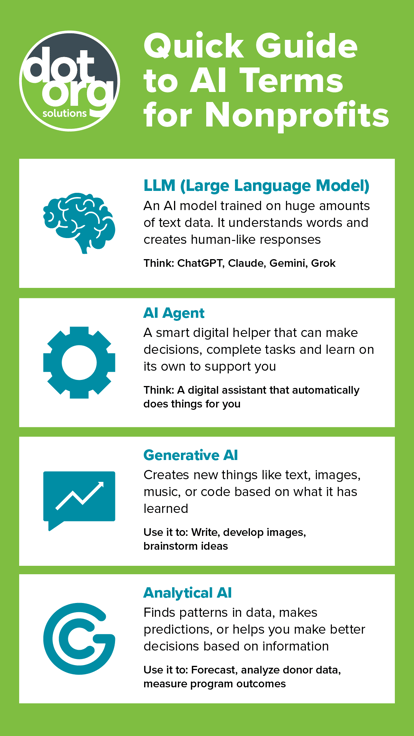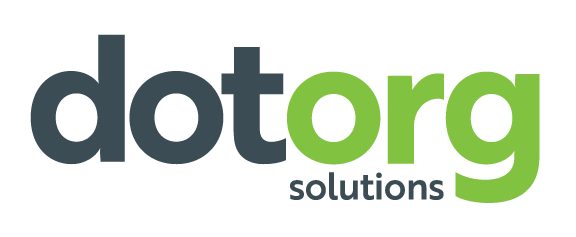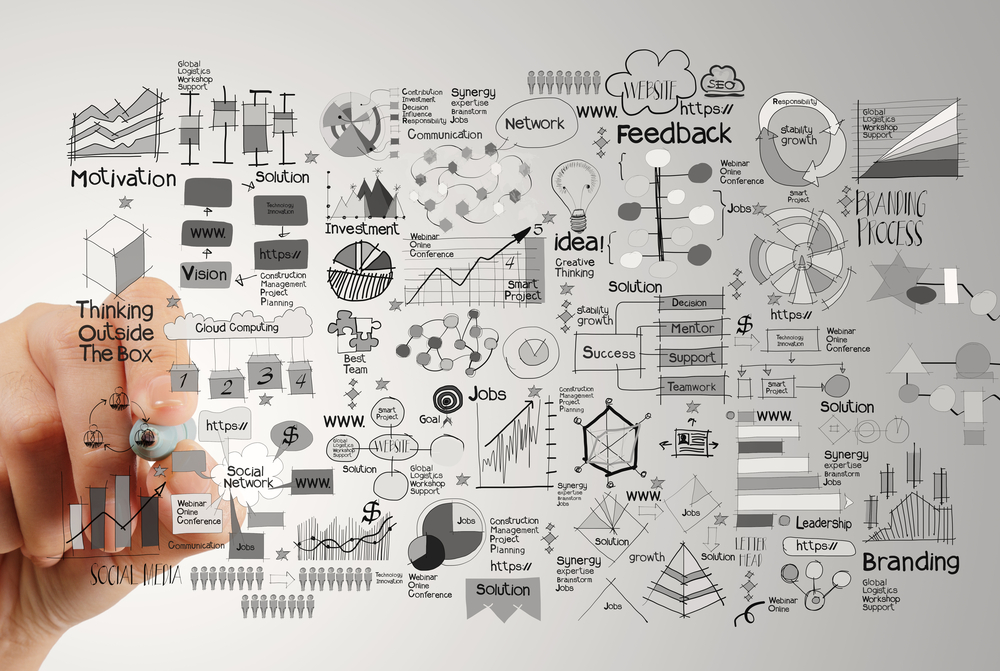AI for Nonprofits: 7 Practical Uses You Maybe Haven’t Thought Of (Yet)
AI tools aren’t just for writing. But, that is the extent of how many people use them.
Don’t get me wrong. AI can help good writers become better and excellent writers become fantastic. As a professional writer myself, I use AI to help me work through thoughts, develop concepts and even give me first drafts – like this blog. (Note to readers: This blog looks nothing like the original AI output once I edited it. But I used AI tools for inspiration.)
But the more I lean into AI, the more I use it for things other than writing. I have developed custom agents for repetitive tasks and have used a variety of AI models to improve productivity, turn random thoughts into actionable strategies and even plan my summer vacation.
That’s what I love about AI. It’s a companion. And it can help time-strapped, resource-stretched, mission-driven nonprofit professionals like you make better decisions, analyze data and complete tasks faster than you ever thought possible. I find is great at helping get through the weeds and making sense of lots of information.
Here are 7 ways you can put AI to work for you
1. Writing awesome prompts
OK, this one is technically about writing, but not what you may normally use AI to do. The best results from AI come from writing outstanding prompts, which are the instructions you give your model to get the outcome you want.
So, think of AI like an intern or a staff member working on a new project. Both do their best with clear direction and context. AI can help you write prompts that guide you and ask for context you didn’t think about on your own.
Sample prompt: Write a prompt to help me develop an email campaign to promote our upcoming event.
I suggest putting this prompt request in ChatGPT, Gemini or other model and see what comes up! You should get a detailed prompt that you can edit and directly upload to your model of choice. Then pick which response works best for you.
2. Developing policies + procedures, visualizing workflows
Organizations frequently need to develop/modify policies and procedures. But it takes time. Use AI to:
- Summarize key points from meeting meetings and recordings.
- Transcribe voice recordings of procedures and turn them into clean, clear policies.
- Compare new procedures to existing ones and edit for consistency.
Example: Use your phone’s voice memo tool to walk through your volunteer or board onboarding process and turn it into a detailed checklist, timeline and internal guide.
You can take it a step further and use AI tools to build process flowcharts, organizational charts and visual dashboards based on workflows or procedures.
3. Distilling complex information
Who has time to read through a 25-page document or RFP to see if the information is even relevant for your organization – especially on a tight timeline.
- Upload long documents like grant guidelines, new legislation and research reports and ask for an executive summary. You can read that first and go back you need to review in more detail.
Sample prompt: I need help writing a prompt to review long RFPs to determine if we want to consider responding to them. I don't have time to review long documents, but want to know key information such as: deadline, key requirements, what we need to provide, etc. I'm looking for a short, executive summary.
4. Conducting deep research
Many of us are used to Googling a topic and wading through the blue links ourselves to gather the data we need. While Google is incorporating AI in its search results, deep research tools embedded in AI models do a better job of analyzing large datasets and making connections fast, which is great for grant writing, storytelling or benchmarking.
I prefer a combination of Perplexity and Gemini for deep research.
- Use Gemini to write a prompt
- Insert the prompt with key information into Perplexity.
5. Comparing data
Not everyone is a professional data analyst. And frankly, data analysis takes time which many nonprofit professionals don’t have. AI can be a great complement to your CRM reports.
AI is a great tool for comparing data, especially fundraising data.
- Use it to understand year-over-year giving patterns or donor attrition
- Spot giving trends by time of year
- Calculate retention rates
- Estimate lost revenue or growth scenarios based on donor retention levels.
Pro tip: When uploading donor data into AI tools, use donor ID numbers or other identifiers. Do NOT use names to protect donor information.
6. Organizing meeting notes and developing action items
We all have “brain dump” moments. But those brain dumps can just become overwhelming lists with no goal or plan to get them done. AI can take voice memos, lists, meeting notes, or messy whiteboard photos and turn them into a to-do list, goal document or plan outline.
Pro tip: After a large planning meeting or retreat, upload audio notes, any written documentation gathered during the session and other handouts. Ask AI to find common themes, develop objectives and provide strategic roadmap complete with tasks, timelines and responsibilities.
7. Managing tasks + improving productivity
From spell checks to scheduling reminders, AI can help you stay on top of the little things. Some tools can even monitor local business hours, track price changes, or auto-archive conversation threads. Tasks may include:
- See how busy a restaurant is at a typical time.
- Check which area grocery store has chicken on sale this week.
- Have AI proofread your annual report for spelling, grammar and punctuation checks. (We have all seen that dreaded typo AFTER something has been printed.)
- Set reminders to yourself, your staff or board without having to write an email.
We love AI. It is cool and here to stay. Just remember…
- AI doesn’t fully replace humans (at least for now) and won’t make strategic decisions for you. But it will help you move faster, get organized and spend more time on the work that really matters.
- AI responses are only as good as the prompts the tool is given.
- AI isn’t perfect.
- AI is a collaborator.
- AI learns from data, which may include biases.
- AI improves efficiency but requires oversight.
If you are new to using AI, start small. Pick one tool. Automate one task. Analyze one group of data. Start small and work your way up.
Want to use AI consistently at your nonprofit? Our team provides customized AI training that meets you where you are.

Amy Wong, president, Dot Org Solutions
Amy believes the world is a better place because of the special work that nonprofits do for our communities for making them better places to live, work and raise families. And as president of Dot Org Solutions, she is a champion for small businesses for the role they play in creating jobs, delivering important products and services, and keeping the economy strong.


